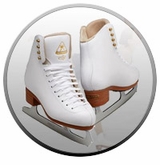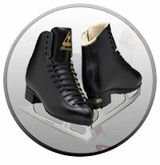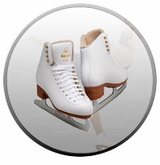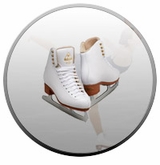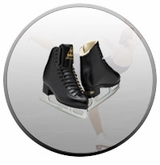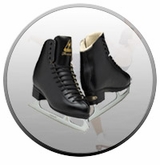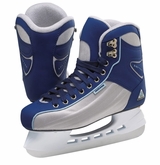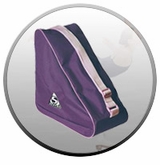Speed Skating
In 1763, thirteen years before America declared independence, the English organized the first known speed skating race. This speed skating race was held on the Fens in England and the distance of the first race was approximately 24 kilometers or roughly 15 miles long.
From the time of this first speed skating race, it took about a hundred years for the sport to reach North America. Some believe that Scandinavian immigrants introduced speed skating to North America. The first known speed skating race in North America took place in Canada on the Saint Lawrence River from Montreal to Quebec in 1854. Speed skating quickly became a regular sport in Canada and in 1887, the Amateur Skating Association of Canada was formed (now known as Speed Skating Canada). In 1892, the International Skating Union (ISU) was created in the Netherlands, and established international standards to govern skating sports. Canada's Amateur Skating Association joined the ISU in 1894. The first Olympic speed skating race took place in Chamonix, France during the 1924 Olympics. The first Olympic speed skating race was a menís 500 meter race and Charles Jewtraw from the United States earned the first gold medal. Women's speed skating became an official event in the 1960 Olympics at Squaw Valley, California.
Olympic Speed Skating
Olympic speed skating consists of eight races: the menís and womenís 500 meter race; the menís and womenís 1,000 meter race; the menís and womenís 1,500 meter speed skating race; the womenís 3,000 meter speed skating relay; and the men's 5,000 meter speed skating relay.
The Race: In preparation for the speed skating race to start, the speed skater leans forward with their knees bent in a crouched position. Their skates are sometimes parallel and approximately at a 45 degree angle to the starting line. Others may put their lead foot away from the starting line.
Once the pistol is fired, the speed skaters push off and make a powerful thrust with their front leg. Their arms swing rapidly to gain momentum. The speed skaterís first few running steps are short. After this, it is important for speed skaters to begin to glide and lower the body position. If the skater takes too many running steps, they will not increase their speed as fast as they would otherwise, and would unnecessarily burn up an excessive amount of energy. Speed skating requires great attention to the efficient use of energy.
If racing in the 500 meter speed skating race, the arms will continue to swing. In the 1000 and 1500 meter races, with the exception of the turns and finish, the speed skater will normally only swing one arm to conserve energy. If the speed skating race is 3000 to 5000 meters or longer, skaters normally put their arms behind them for the entire race to conserve energy.
The efficient use of the arms is particularly important during speed skating. The best speed skaters will swing their arms only when it is to their advantage. Inexperienced speed skaters will waste a lot of energy, and lose time by swinging their arms improperly. In speed skating, skaters stay in the crouched position throughout the race. Any bobbing the body makes means a time loss for the skater. The uniform or outfit used for speed skating consists of a skintight racing suit with a hood for better aerodynamics.
Speed Skating Skates
In speed skating, skaters wear the new klapskate that was invented in the mid-eighties. The klapskate was not widely used for nearly a decade in speed skating, until it was proven to increase the speed skaterís time. The klapskate has a blade that is not attached at the heel to the boot, unique to speed skating. This new design prevents the tip of the blade from digging into the ice, and keeps the blade on the ice for a longer period, thereby increasing the pushing power of the speed skater. Klapskates have been approved to use at Olympic speed skating competitions since the 1998 Olympics at Nagano, Japan.
Getting Started Speed skating
If youíd like to get involved in speed skating, but are new to ice skating, we recommend you start with the basics. It would be to your advantage to learn the ice skating basics using regular ice, figure or hockey skates, before trying speed skating. The speed skate has a longer blade which makes it more difficult to learn on, and is considered to be more dangerous. Some ice skating rinks do not allow speed skates to be brought in for safety reasons. Once you feel comfortable ice skating and have the basics down, then move on to speed skating.
After you make that decision to give speed skating a try, the first thing youíll need is to purchase a pair of speed skates. Once you select a pair, the next step will be to learn to skate in a very unnatural crouched position. Next, youíll need to learn the proper arm movements (a variation of swinging or clasping your arms behind your back). If you want to become a competitive speed skater, we recommend you find a place to take speed skating lessons. Practicing often and correctly, like most things, will be an important ingredient to your success. We invite you to use our Ice Skating Rinks locator to find the rink nearest you, and give them a call to inquire about speed skating.
|
Skate Equipment >
Ice Skating Equip
Ice Skating Info
.
